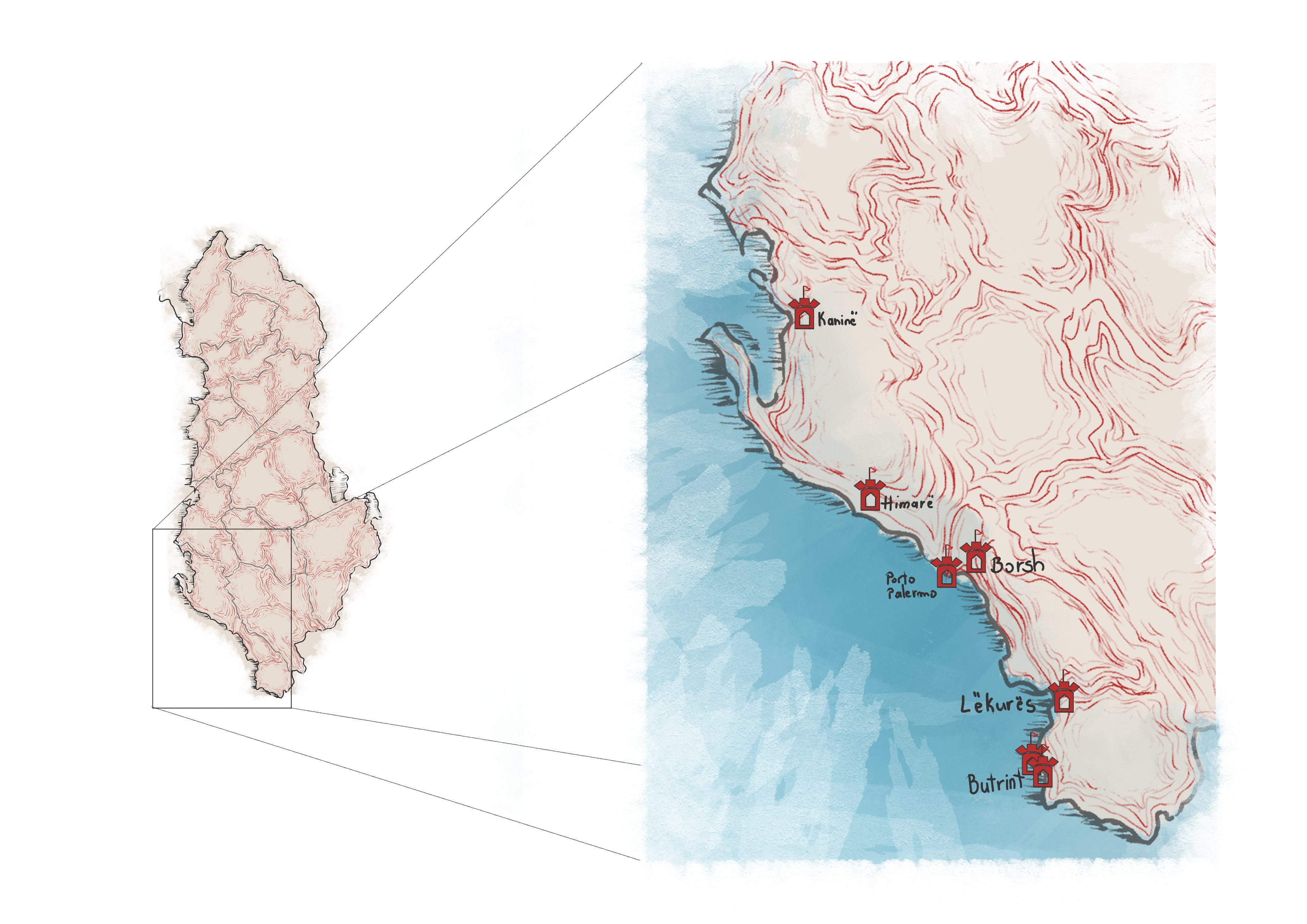Borsh (Sopot) Castle

The Borsh Castle rises on a hill that ends at the top with a rocky ridge, occupying a central position opposite the ancient city of Borsh, just 2 km away from the beautiful coastal village.

Built in the 4th century BCE by the Illyrian-Epirus tribes, it was reconstructed by Justinian in the 5th century and later by the local inhabitants who used it as a town and fortress.

An ancient settlement and military fortress, during the rule of Ali Pasha Tepelena, it became one of the most important fortifications on the Albanian coast.

The favorable geographical position, with abundant water sources and surrounding mountains, has supported the habitation of this area since ancient times.

On the western side, the mountain forms several natural terraces, where the remains of medieval buildings can be seen. Traces of ancient walls are visible on the southwestern side, extending approximately 10 meters in length and 1.33 meters in height.





